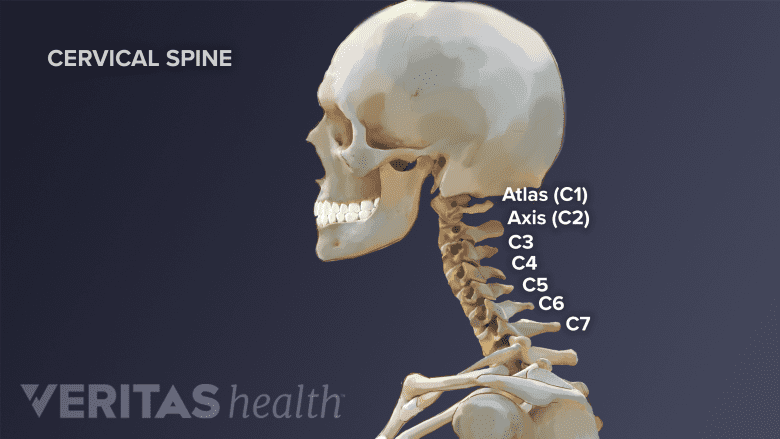Cervical osteoarthritis symptoms can range anywhere from an occasional mild discomfort to an unrelenting, severe pain that disrupts quality of life on a daily basis.
In This Article:
- Cervical Osteoarthritis (Neck Arthritis)
- Cervical Osteoarthritis Symptoms
- Diagnosing Cervical Osteoarthritis
- Cervical Osteoarthritis Treatment
- Cervical Facet Osteoarthritis Video
Pain from Cervical Osteoarthritis
When cervical osteoarthritis becomes symptomatic, it is typically characterized by pain that:
- Starts gradually and may or may not get progressively worse over time
- Feels stiff and achy rather than sharp, especially in the early stages
- Is worse first thing in the morning, then improves after getting up and moving around
- Gets worse again at the end of the day
- Subsides with rest during a flare-up
- Radiates to the shoulder or between the shoulder blades
- Feels tender when the neck is pressed
- Disrupts sleep in the middle of the night
- Causes headaches, especially in the back of the head
A person with cervical osteoarthritis may experience all of these symptoms or only a few, and symptoms may progress or change over time.
Severe Symptoms of Cervical Osteoarthritis
Cervical osteoarthritis may lead to nerve impingement causing numbness and weakness in the arm.
Cervical bone spurs (osteophytes) are a common marker of cervical osteoarthritis. For some people with cervical osteoarthritis, these bony overgrowths may impinge on a spinal nerve, producing cervical radiculopathy symptoms of pain, tingling, numbness, and/or weakness that radiate down into the shoulder, arm, and/or hand.
If the osteoarthritis impinges on the spinal cord, it could lead to spinal cord dysfunction, called cervical myelopathy. This condition could include pain, tingling, numbness, and/or weakness anywhere in the body beneath the neck, as well as potential problems with coordination. For example, a person with cervical myelopathy could have trouble with walking, buttoning a shirt, or controlling bladder and bowel function.
In some instances, cervical spondylolisthesis (when one cervical vertebra slips forward over another) may be a secondary issue to the arthritis in the cervical facet joints, although spondylolisthesis is much more common in the lumbar spine (lower back).
Osteoarthritis Differs from Rheumatoid Arthritis
Both osteoarthritis and rheumatoid arthritis can cause similar symptoms in the neck.
Both osteoarthritis and rheumatoid arthritis can occur in the cervical spine and have many similar symptoms. However, unlike osteoarthritis, rheumatoid arthritis is an autoimmune disease that can be accompanied by many more symptoms, including fatigue, loss of appetite, and potential complications for organs, such as eyes, skin, lungs, and others.
See Rheumatoid Arthritis in the Spine
Cervical osteoarthritis is more likely to occur in the lower cervical vertebrae, whereas rheumatoid arthritis is more likely to occur in the upper cervical vertebrae.







